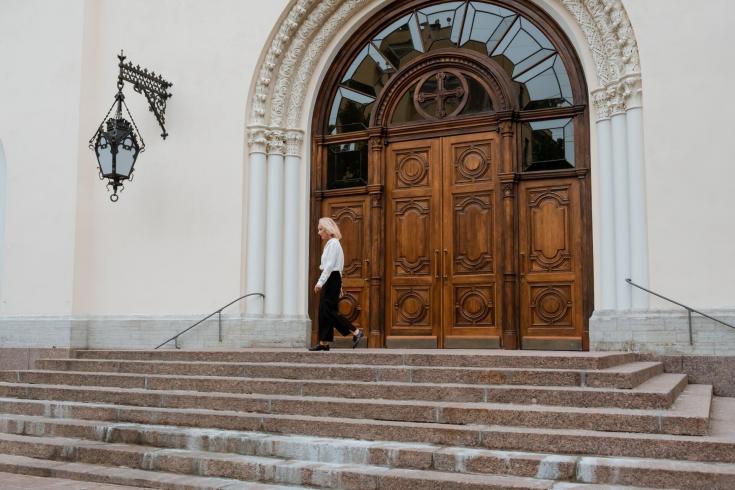Energy renovation of heritage buildings

Europe’s cultural heritage is one of our most valuable assets, enriching communities and making our continent a favoured tourism destination. This heritage includes our traditional and monumental buildings, which have survived the centuries and give cities their landmarks and specific characteristics.
However, many of these buildings do not meet modern requirements of comfort and energy efficiency, requiring significant energy use and generating higher than average greenhouse gas emissions. Typical renovations – such as external insulation, double- or triple- glazed windows, use of new technologies and materials – may, though, damage the cultural and aesthetic qualities of heritage buildings, requiring new approaches.
The VIOLET project has explored this issue, identifying good practices from across Europe for enhancing energy efficiency in heritage buildings, and developing action plans for its partner regions and municipalities of South-East Romania, Cyprus, Andalusia (Spain), Middelburg (Netherlands) and Gironde (France), to improve regional policies and European Regional Development Fund policy instruments.
Good practices for renovation
In the first phase of the project, the partners identified a number of replicable good practices and approaches, including the following practices, which particularly stand out.
In the Netherlands, DuMo (Duurzame Monumenten, or Sustainable Monuments) is a calculation model for mapping the sustainability of a building in combination with its historical value. Each part of a historic building has a different cultural value and the DuMo tool can be used to determine how renovations can be made without impacting upon the most culturally important parts.
Building owners looking to improve their energy performance can hire a consultant to make the calculations and receive an advisory report that can guide them in their renovation decisions. The calculation makes use of two coefficients: Du (Sustainability) and Mo (Monumentality) to find interventions in which Du rises, whilst Mo remains the same. The model has been used for more than forty-five buildings, with most improved to Energy Efficiency label A or B.
Whilst DuMo provides tailored advice to monumental building, in Romania, a practice was identified providing Architectural Guidelines for the region of Dobruja, which has an abundance of traditional houses, using local materials and techniques. The guidelines can be applied to a wide number of traditional residences to enable renovation that can maintain cultural heritage, and also contain guidance on new builds to ensure that they are in harmony with the local character.
In the guidelines, each part of the building has been analysed and recommendations have been made for using local resources to improve energy performance and comfort, which could both improve quality of life for residents and create employment in the region. The document was drawn up by the Romanian Chamber of Architects for around 13,000 EUR and made available for free to regional stakeholders.
Improving regional frameworks
The process of collecting good practices and sharing experiences has resulted in the definition of five action plans, setting out proposals for improving regional policy frameworks. These proposed actions include:
- Amendment of the Regional Operational Programme to enable energy renovation to be funded under the TO6 cultural heritage priority (Andalusia)
- Issuing Energy Performance Contracts to determine the base mark of fifteen heritage buildings, establishing training sessions for building professionals, and setting up a guidebook for heritage of cultural buildings based on the Romania example (Cyprus)
- Improving the monitoring methodology for patrimony projects under the Regional Operational Programme (South-East Romania)
- Investigating the effectiveness of sustainable listed house coaches and integrating heritage buildings into the regional zero-emissions strategy (Middelburg);
- Establishing training sessions for administrative agents, creating a guidebook on making use of regional resources and maintaining cultural heritage (Gironde), capitalising on high performance renovation of patrimonial buildings.
As well as these planned changes, VIOLET has already achieved a tangible regional improvement. As a result of the 2016 territorial reform in France, a new region was created – Nouvelle-Aquitaine – which is managing the three Operational Programmes (OPs) of the three precursor regions, each with different priorities and budgets.
As revision of these OPs was deemed to be complex, Nouvelle Aquitaine turned to the mandatory and more detailed Regional Programme for Energy Efficiency (PREE) that new regions need to put in place, with the aim to tackle issues which were not taken account of in the three OPs. The new regional authority participated as a part of VIOLET’s local expert group, and as a result of project exchanges, calls for proposals under PREE will provide additional financial assistance to owners of heritage buildings.
Recommendations for further development
As well as the Action Plans, VIOLET has drawn up a
, drawing together recommendations made for the European, national and regional levels. With contributions from all partners, VIOLET concludes that, “decision makers should be to push for a rapid implementation of a comprehensive EU legislative framework capable of considering the nature and needs of heritage buildings in the area of energy efficiency.”In particular, they recognised the need to:
- Establish a single competent and responsible authority or department in each region, though concerns remain on how to decide which actor is in the best position;
- Co-ordinate more efficiently between cultural heritage preservation and energy efficiency measures;
- Introduce specific instruments, such as a mandatory evaluation tool, which refers to the obligation to carry out energy audits for all types of buildings, including heritage buildings;
- Ensure that EU legislation takes account of the unique nature of traditional and heritage buildings, allowing for the adoption of a flexible approach – in particular, amending current legislation, including the Energy Performance of Buildings Directive (EPBD), which only has fleeting mention of heritage buildings.
- Enhance implementation of standard ‘EN 16883:2017 Conservation of Cultural Heritage Guidelines’ in the rehabilitation of heritage buildings to generate the necessary knowledge and experience to face the changes in the EPBD.
Further information
Click here to visit the project website, explore their collection of good practices, check out the VIOLET Action Plans, or read the projects,
.